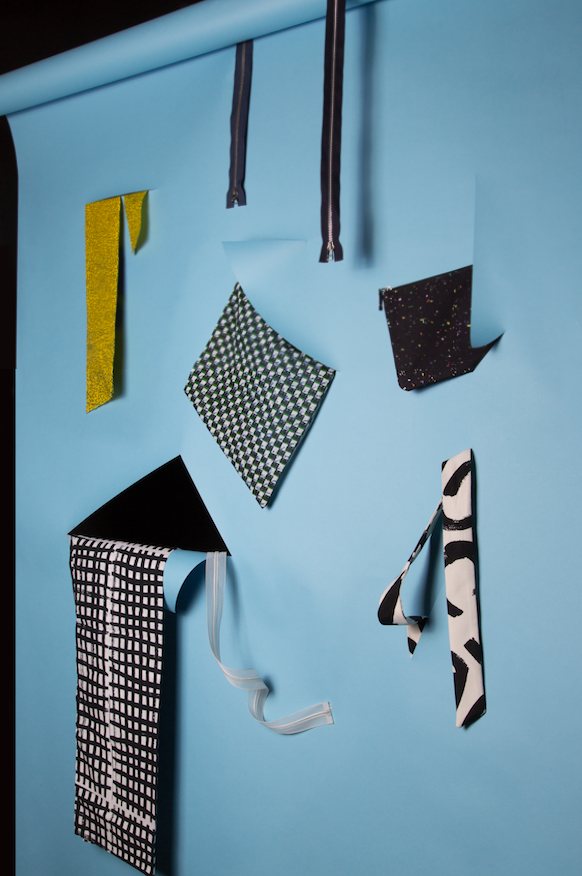Happy Customers
Advances in fashion production technology mean everyone can dress individually

In the past, getting your hands on bespoke garments was prohibitively expensive. Now, advances in fashion production technology mean everyone can be an individual.
Whether it’s choosing the right shade of suit on Savile Row or adding a personalised mark to an otherwise generic accessory, customised clothing tends to come at a premium. But thanks to modern production techniques, which enable low-cost, small-scale production, personalised fashion is now an affordable possibility.
Pablo Holman is one innovator using such production methods. At Bombsheller, his Seattle-based company launched two months ago, customers can buy affordable customised spandex leggings. It is, Holman explains, part of a growing movement that puts the individual consumers at the heart of the experience. “I come from the high-tech industry,” Holman says. “I've worked in a lab inventing stuff for years. What's really exciting about 3D printing, which we use for our leggings, is that it’s totally programmable so that you can potentially make anything. No two things ever have to be the same.”
Personalised fashion is not only a business opportunity for us but also the opportunity to engage with customers. Bombsheller invites customers to design their own leggings – or choose from an extensive catalogue of previously made looks. To design a pair, they simply download a template from the Bombsheller website which can then be edited using Adobe Illustrator. A 3D rendering demonstrates how and where the designs will sit on their body. When finished, the design is added to the company's catalogue, alongside a price set by that customer. Each time another person buys one of their designs, the customer receives a royalty.
With his new approach to production, Holman has found a way to fast-track a lengthy, expensive process. “Traditionally a fashion designer has to make a design, which they have to put on a model on a runway and get buyers excited about it,” he explains. “Then if a buyer says 'yes, I like that, we will take 1,000,’ the designer has to get factory time allocated somewhere in Asia, and then source all the different materials for that product. These then have to converge in the factory, where 1,000 copies have to be made in small, medium and large. A space on a boat also needs to be reserved in order to get them to Europe or America.
Then, finally it gets into stores – where it may or may not sell.” Whereas at Bombsheller, a customer simply clicks ‘buy now’, and the item is printed and shipped out to them on the same day. If something is made for someone specifically, they have a much stronger relationship with that piece. This means creating things that you don't buy and dispose of immediately. Holman believes that this kind of small-batch production, which can respond to the demands of clients, is creating an attractive new model for clothing manufacture.
“We have exactly one fabric – white fabric from Italy – and we use a digital printer to print the graphics,” he explains. “We don't have to spend any money or resources on the design. We don't spend money on inventory or market validation or guessing what will be popular. We don't have to waste money.”
This new approach to production is also beneficial to the environment, according to Sandy Black, professor of fashion and textile design and technology at the London College of Fashion, who also worked for the Considerate Design Project which looked into the development of personalised fashion products. “The agenda is to use technological systems and processes to help towards sustainability,” explains Black. “It's considering the person, the environment and the level of engagement. If something is made for someone specifically, they have a much stronger relationship with that piece. This means creating things that you don't buy and dispose of immediately.”
Part of the ingenuity of personalised production is in making it easier to translate a customer’s designs into something a machine can understand. Knyttan, a start-up based at Somerset House in London, aims to democratise fashion design and manufacturing by enabling people to customise a design using their phone, computer or tablet. “Normally an experienced technician would have to convert this design into the code to run these machines. With our system this becomes automatic,” says Ben Alun-Jones, Knyttan’s director and co-founder. “We have re-written the software for industrial knitting machines from the ground up so that we can produce a different garment every time for a similar price to mass production,” he continues. “There are obviously some constraints such as the number of yarns on the machine at one time, but we can radically change colours, patterns or shapes for each item.”
Normally manufacturers for knitwear are faced with a high minimum number of items in a single production run – often over 50 – which makes it prohibitively expensive for small fashion studios, not to mention for individuals. “Using our system, we can affordably manufacture one-off garments, and we are using this to give everyone the opportunity to design their own knitwear,” he says.
Other start-ups are focused on improving the consumer side of the process, by building easy-to-use apps which allow people to customise items at their fingertips. Another London-based company, YR Store, claims to be the world's first custom fashion brand app; it enables customers to design their own T-shirts from scratch in minutes, and launched at Topshop's flagship store on Oxford Street.
Established global brands are experimenting with personalised fashion too, using a combination of apps, online platforms and in-store technology. Earlier in 2014, Adidas enabled customers to print high-quality photos on its ZX FLUX shoe. Torben Schumacher, vice-president of footwear at Adidas Originals, described the response as “overwhelming”. In fact, it was so popular that Adidas went on to release its miZX FLUX app, which enables people to customise some of the brand's most iconic footwear models, such as the Stan Smith and Superstar 80s, with their own photographic images.
Advances in technology, Schumacher adds, have enabled brands like his to bring customisation to the masses. “It was really important to us to make it available to a large audience and still keep it very affordable,” he says. “Personalised fashion is not only a business opportunity for us but also the opportunity to engage with consumers in a very personal and creative way. We want to put the consumer at the heart of everything we do. This is definitely only the beginning, there is much more to come.”
Originally printed in Protein Journal Issue #14


